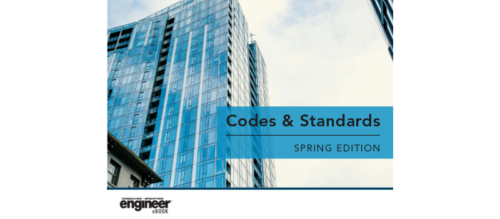IAPMO Joins Forces with Health Organizations on UPC Concerns
The International Assn. of Plumbing and Mechanical Officials (IAPMO) has invited two prominent health organizations to contribute to the development of the Uniform Plumbing and Mechanical Codes: the Assn. for the Advancement of Medical Instrumentation (AAMI) and the Food and Drug Administration (FDA).
AAMI originally contacted IAPMO with concerns that the Uniform Plumbing Code might be too restrictive regarding materials used in water purification circulating loops and about the possibility of excess backflow devices protecting the water supply from dialysis units. AAMI and IAPMO made a request to the FDA to clarify the extent of its authority in the regulation of water systems used to distribute purified water for hemodialysis systems.
In a letter dated Sept. 23, 2004, to Timothy Ulatowski, director of compliance for the Center for Devices and Radiological Health, IAPMO said “Like your organization, IAPMO’s members share a similar vision and mission to protect the health and safety of the world’s inhabitants by developing the minimum standards for plumbing and mechanical installations. We recognize the importance of the department of Health and Human Services, welcome your input, and appreciate your involvement.”
The letter addressed the concerns of AAMI and the FDA by stating that “each jurisdiction is free to adopt the UPC in its entirety or, if they desire, to amend any provisions contained therein.” If one or more jurisdictions have chosen to prohibit a specific material for tubing in water distribution loops, that decision emanates from such jurisdiction and is not a product of the process that created the most recent version of the UPC.
Jay Peters, senior director of codes and education for IAPMO, spoke to the core issue of backflow protection in hemodialysis systems by stating in the letter that “we would be most appreciative if you could provide as much technical data as possible illustrating the serious public health concerns described in your letter.”
He went on to say, “After receiving the information and supporting documentation, it will be presented to the IAPMO Answers and Analysis committee for their review and analysis. The code does not specifically assert that a backflow prevention device is required at every unit as is stated by the organizations; therefore, an informal analysis should be issued to assist all involved with the installation and enforcement of these important systems.”
Another option offered for consideration was the possible issuance of a Tentative Interim Amendment or TIA. This allows proponents of a code change the ability to prove that there is an emergency correction that needs to be addressed. It is then considered by the Technical Committee, voted on, and if approved, added as an amendment to the 2003 edition of the code. “We invite all interested parties to participate in the development of these code documents. A balanced, open and consensus method is the cornerstone of the IAPMO ANSI code development process.”
For more information email Jay Peters .
Do you have experience and expertise with the topics mentioned in this content? You should consider contributing to our CFE Media editorial team and getting the recognition you and your company deserve. Click here to start this process.



